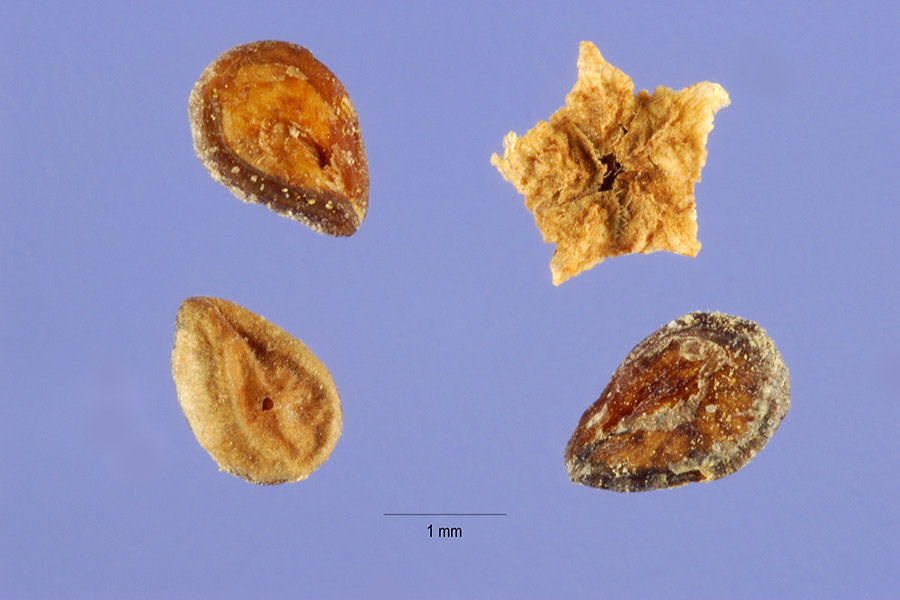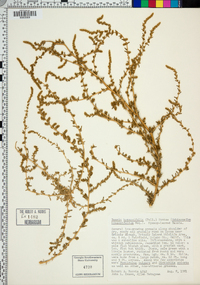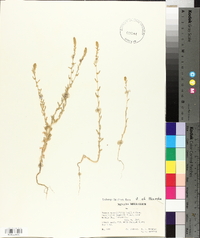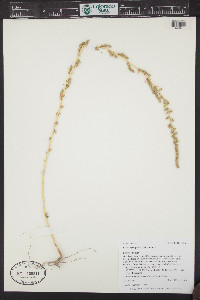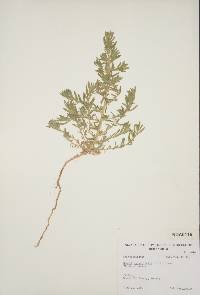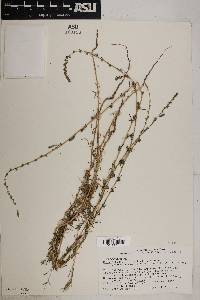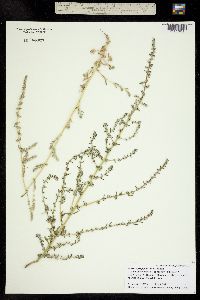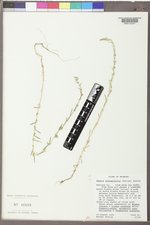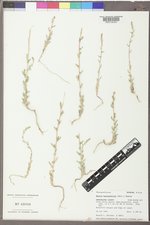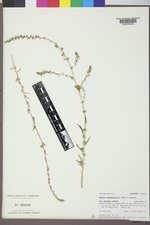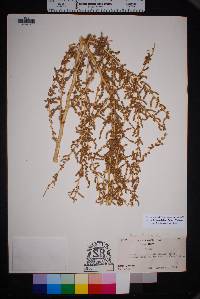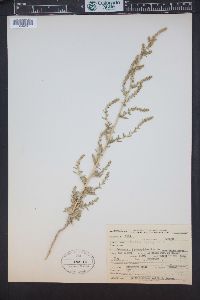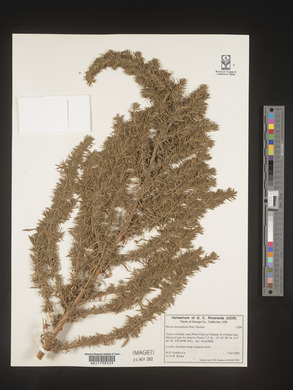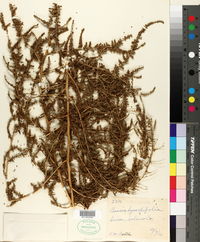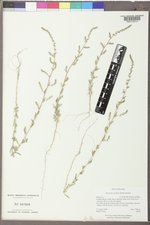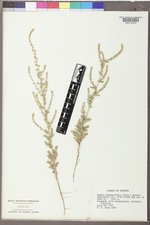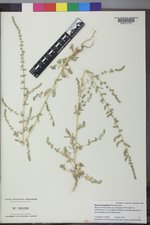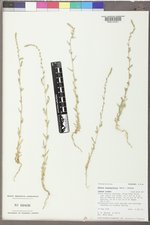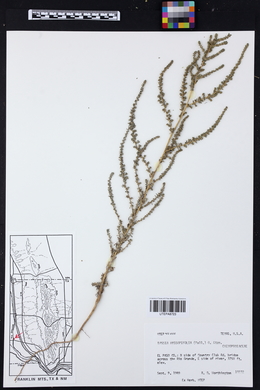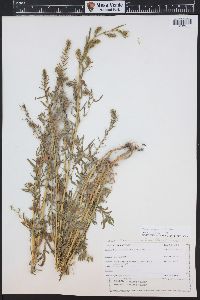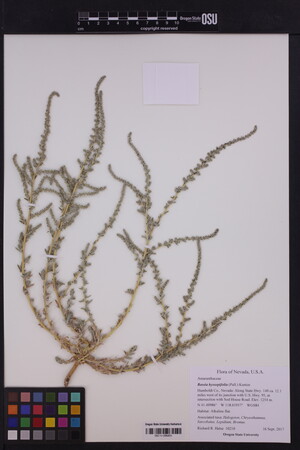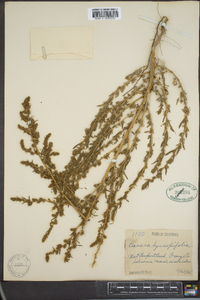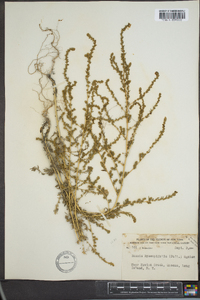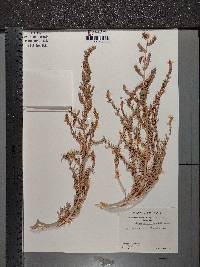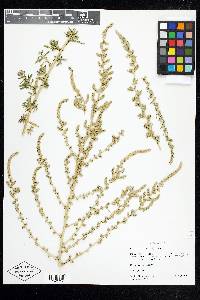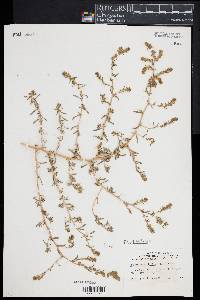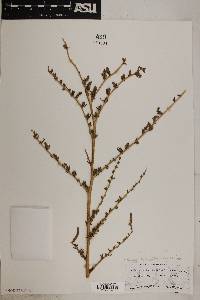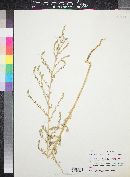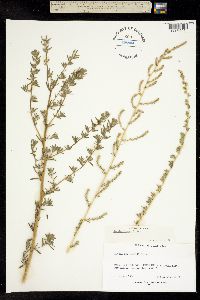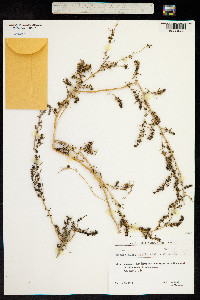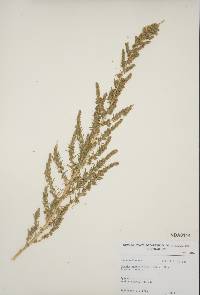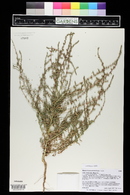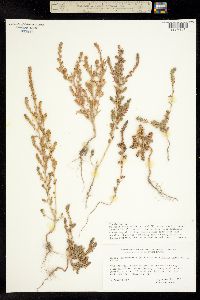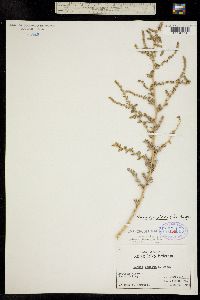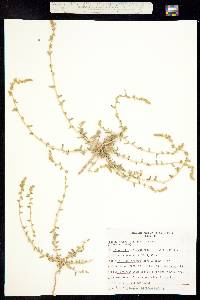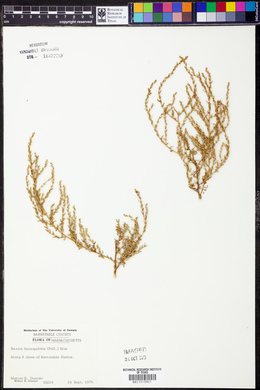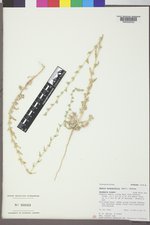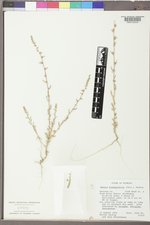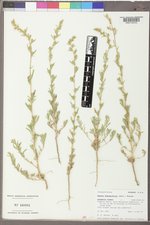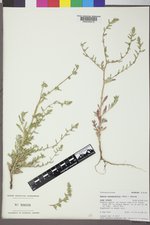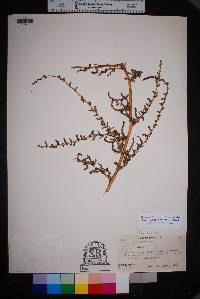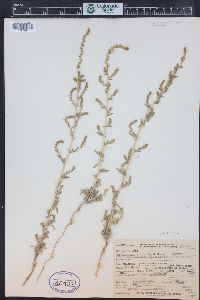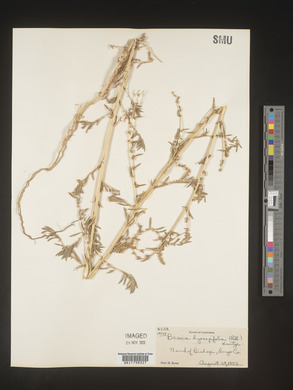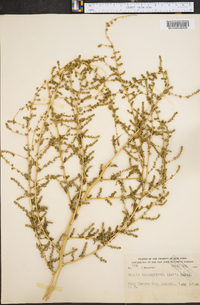
|
|
|
|
Family: Amaranthaceae
Five-Horn Smotherweed, more...fivehorn smotherweed, bassia, fivehook bassia, smother weed, smotherweed
[Echinopsilon hyssopifolium, moreEchinopsilon hyssopifolius (Pallas) Moq., Kochia hyssopifolia (Pallas) Schrad.] |
Plants 5-100 cm. Stems divari-cately branched or simple. Leaves sessile (or sometimes narrowed into pseudopetiole); blade lanceolate-elliptic, lanceolate, or linear, flat, base cuneate. Inflorescences with ± straight axes. Perianth segments with thin, hooked spine adaxially at maturity. 2n = 18. Flowering late summer-fall. Saline habitats, coastal dunes, salt marshes, disturbed habitats, roadsides, fields; 0-1200 m; introduced; Alta., B.C.; Ariz., Calif., Colo., Idaho, Mass., Mont., Nev., N.Mex., N.Y., Oreg., S.Dak., Tex., Utah, Wash., Wyo.; Eurasia (e Europe, arid regions of Asia). Bassia hyssopifolia has been reported from southern Saskatchewan, but H. J. Scoggan (1978-1979, part 3) noted that this record possibly referred to Kochia scoparia (Linnaeus) Schrader. Putative hybrids between B. hyssopifolia and K. scoparia are reported from Utah (S. L. Welsh 1984). Such hybridization is extremely interesting because it has not been reported within the native ranges of those species in Eurasia. I have seen only one specimen that might represent such a hybrid. Its general habit resembles Bassia (including pubescent leaves), but its perianth segments are very variable, with winglike, conic, or almost spinescent appendages.
FNA 2003, Martin and Hutchins 1980, Heil et al 2013 Duration: Annual Nativity: Non-Native Lifeform: Forb/Herb General: Annual with much branched stems, the main stem erect and lower lateral stems often decumbent and branching from base, 5-100 cm. Herbage more or less lanate, especially in the inflorescence. Leaves: Alternate, sessile, lanceolate-elliptic to lanceolate, or linear flat, with a cuneate base, 10-40 mm long. Flowers: Inconspicuous green flowers are surrounded by leaflike bracts. Flowers in leaf axils (solitary or in glomerules) and arranged in terminal panicles of short spikes. Pistillate and sterile flowers mixed with perfect flowers. Perianth segments villous or tomentose, 5-lobed with a hooked spine on the back in maturity. Fruits: Ovate-compressed achenes are enclosed by but free from the perianth. Ecology: Found in saline soils, often in salt marshes, riparian zones, and disturbed habitats along roads and fields below 4,000 ft (1219 m); flowers August-October. Distribution: Widespread across the western United States, north into Canada. Notes: This annual weed is distinguished from other similar species by the hooked spines on its outer perianth segments. It is known to hybridize with Kochia scoparia, which is has been treated in the genus Bassia due to this hybridization. In addition to the differences in the fruiting structure, Fivehook Bassia is also hairier than Kochia scoparia. Fivehook Bassia resembles Russian thistle in growth form, but is hairier and has wider, less succulent leaves. Traditionally placed in the goosefoot family (Chenopodiaceae), that entire family was recently lumped into Amaranthaceae. Ethnobotany: Unknown Etymology: Bassia named for Ferdinando Bassi (1710-1774) an Italian botanist, while hyssopifolia means with leaves like hyssop. Synonyms: Echinopsilon hyssopifolius, Kochia hyssopifolia Editor: SBuckley, 2010; AHazelton 2015 Much like no. 1 [Bassia hirsuta (L.) Asch.]; lvs flat, to 2(-3.5) cm; spikes slender, terete, 4 mm thick, with straight axis; all sep with a slender, hooked dorsal spine; 2n=18. Native of Eurasia, intr. especially along the seashore from Mass. to N.J., and also in w. U.S. Gleason, Henry A. & Cronquist, Arthur J. 1991. Manual of vascular plants of northeastern United States and adjacent Canada. lxxv + 910 pp. ©The New York Botanical Garden. All rights reserved. Used by permission. |
This project was made possible in part by the Institute of Museum and Library Services [MG-70-19-0057-19].
Powered by Symbiota

